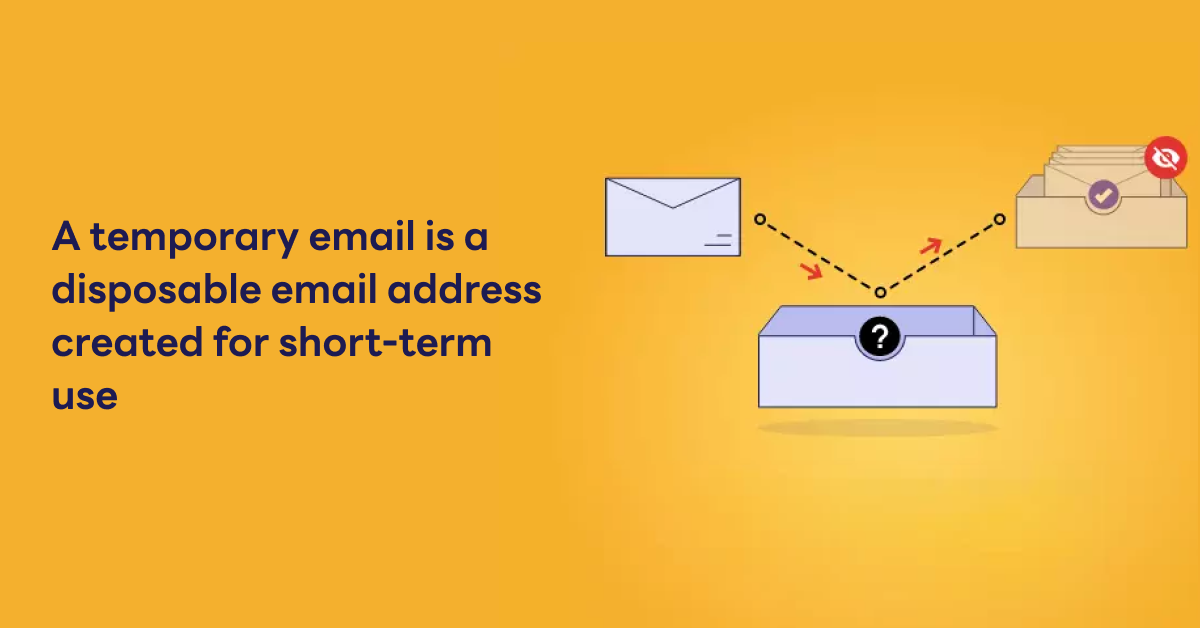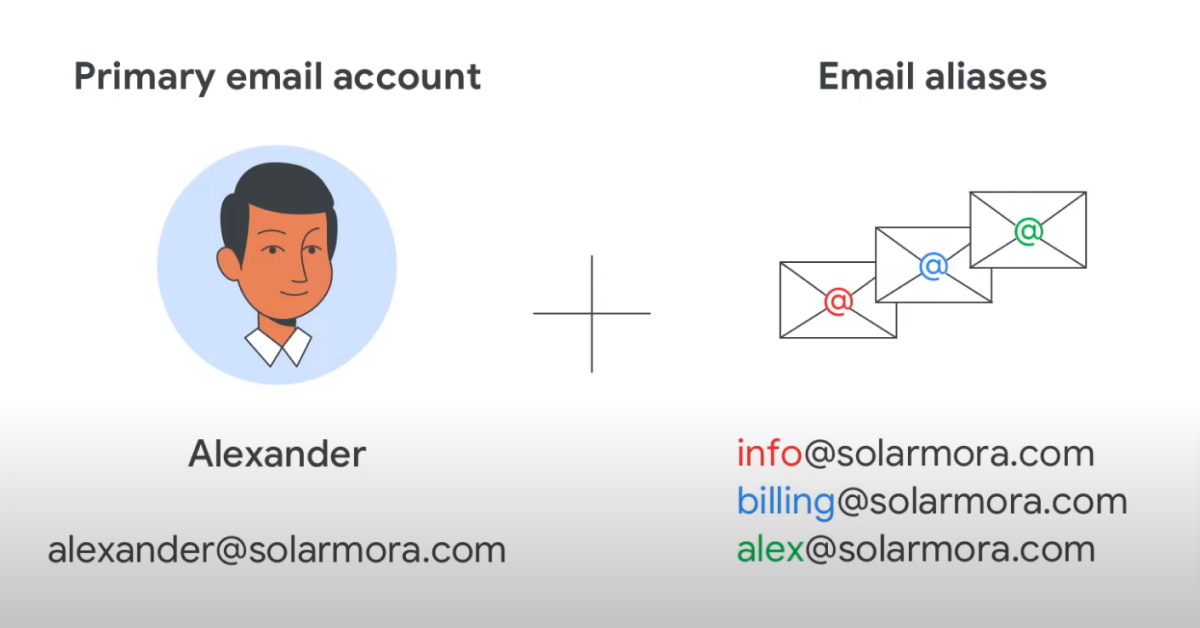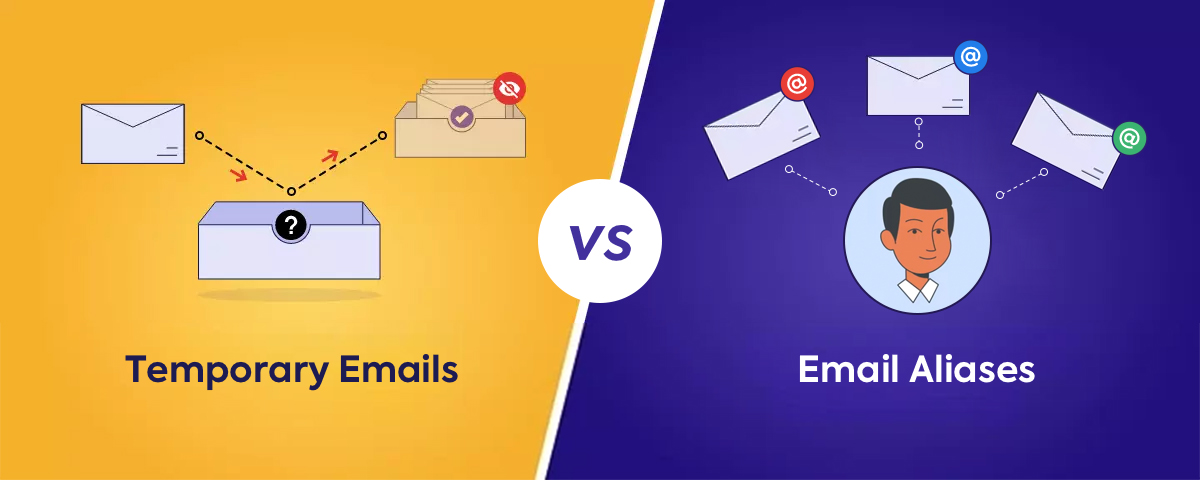

In this digital, fast-paced world, there is growing concern about one’s online image and the need to safeguard it. Two common means of doing this are by using disposable emails and email aliases. Although both approaches are somewhat analogous, each has its uses and specifications. In this article, we’ll explain the difference between temporary emails and email aliases in detail, to assist you in making an informed choice about which option is best for you.

Temporary emails, often referred to as disposable emails, are email addresses created with the intention of lasting a few hours or a day at most. Such emails are usually created spontaneously and are used for a short period before they expire. Users of TempMail, for example, TempMail.so, can follow simple steps to generate temporary email addresses.
Temporary emails provide functionality when you need to provide an email address but do not want to give your main address. They help avoid spam, unsolicited emails, unwanted services, and data leaks.
Key characteristics of temporary emails include:
Lifetime expiry within a certain period
No prior sign-in or private data is required
Immediate use and instant creation
Prevention of junk and email mining
Temporary emails are best for scenarios requiring a one-time email, such as registering for a free trial, signing up to download a white paper, or filling out an online questionnaire. They help keep your main inbox clean and reduce the chance of exposing your personal email.

Email aliases refer to additional addresses associated with a primary email account. While temporary emails are time-limited, aliases are usually permanent and used to receive emails in the inbox. Email aliases work similarly to call forwarding—they allow you to receive emails directed to an alias address in your primary email account.
Many email service providers, such as Gmail and Outlook, offer the functionality to create email aliases. Some important features of email aliases are:
Permanently added to the primary account
Capability to post and receive messages using the alias address
Organizational filtering features that can be customized
Ability to use multiple aliases for various needs
Email aliases are useful for decluttering your inbox, distinguishing between personal and work emails, or creating addresses dedicated to online purchases or newsletters.

Both temporary emails and email aliases serve to mask your main email account, but there are several critical differences:
Lifespan
Temporary emails are short-lived, usually disappearing after a few hours or days. They are ideal for one-time or short-term use.
Email aliases are lifelong additions to your email account, remaining in use until you decide to delete them.
Inbox Management
Temporary emails typically come with a separate inbox that is only accessible for a limited time. You need to log in to the temporary email service to view received messages.
Email aliases consolidate all received messages in your primary email account, allowing for better integration and management.
Capabilities of Sending
Temporary emails are primarily for receiving messages. While some services offer sending capabilities, they are not their main function.
Email aliases allow both sending and receiving messages, making them more versatile for communication.
Customization and Control
Temporary emails are usually created with minimal personalization. They are great for privacy but may lack in ease of use or memorability.
Email aliases offer more control and customization, allowing you to choose and manage addresses according to your needs.
Temporary emails are suitable for brief interactions and situations requiring high confidentiality, such as:
Registering for services or free trials without committing long-term
Accessing gated content like whitepapers or eBooks
Filling out online questionnaires or contest forms
Testing website features during construction
Creating profiles on websites you don’t use frequently
To learn more about the advantages of using temporary email addresses, read our article Benefits of Using a Temporary Email Address.
Email aliases are ideal for ongoing communication and email management. Common use cases include:
Distinguishing between personal and business emails
Assigning aliases for online orders or subscriptions
Using separate addresses for various projects or clients
Combining incoming emails based on the alias
Keeping a primary email address while having a dedicated address for long-term communication
Consider the following when deciding between temporary emails and email aliases:
Duration of Use: Temporary emails are best for one-time or short-term needs, while email aliases are better for long-term communication.
Privacy Concerns: Temporary emails offer enhanced privacy with no personal information required and a short lifespan.
Sending Capabilities: Use temporary emails for receiving only, and email aliases for both sending and receiving.
Inbox Management: Decide whether to manage emails separately (temporary email) or within your existing email system (alias).
Unique Requirements: Email aliases are beneficial for specific needs or implementing honeypot filtering.
You can use temporary emails and email aliases together for the best protection:
Use temporary emails for single sign-ups, downloads, and other brief needs.
Create email aliases for regular communication and long-term use.
Assign different aliases for specific purposes (e.g., online purchases, newsletters) to keep your inbox organized.
Regularly review and update your aliases for optimal inbox management.
In conclusion, understanding the differences between temporary emails and email aliases is crucial for managing your emails while protecting your privacy. Temporary emails offer short-term solutions, while email aliases provide more permanent, versatile options for email management. Combining both methods can enhance your email privacy and streamline your communication.
Review your email management practices periodically to ensure you are using the best methods to protect your privacy online.